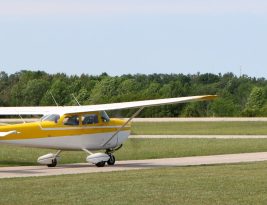Thinking about your takeoff technique? Today we’ll consider the role of ground effect. Simply put, ground effect is the reaction of the airflow against the ground surface. Today’s post comes from our foundational flying textbook The Pilot’s Manual 1: Flight School. Here’s a basic overview:
The cushioning of ground
…

